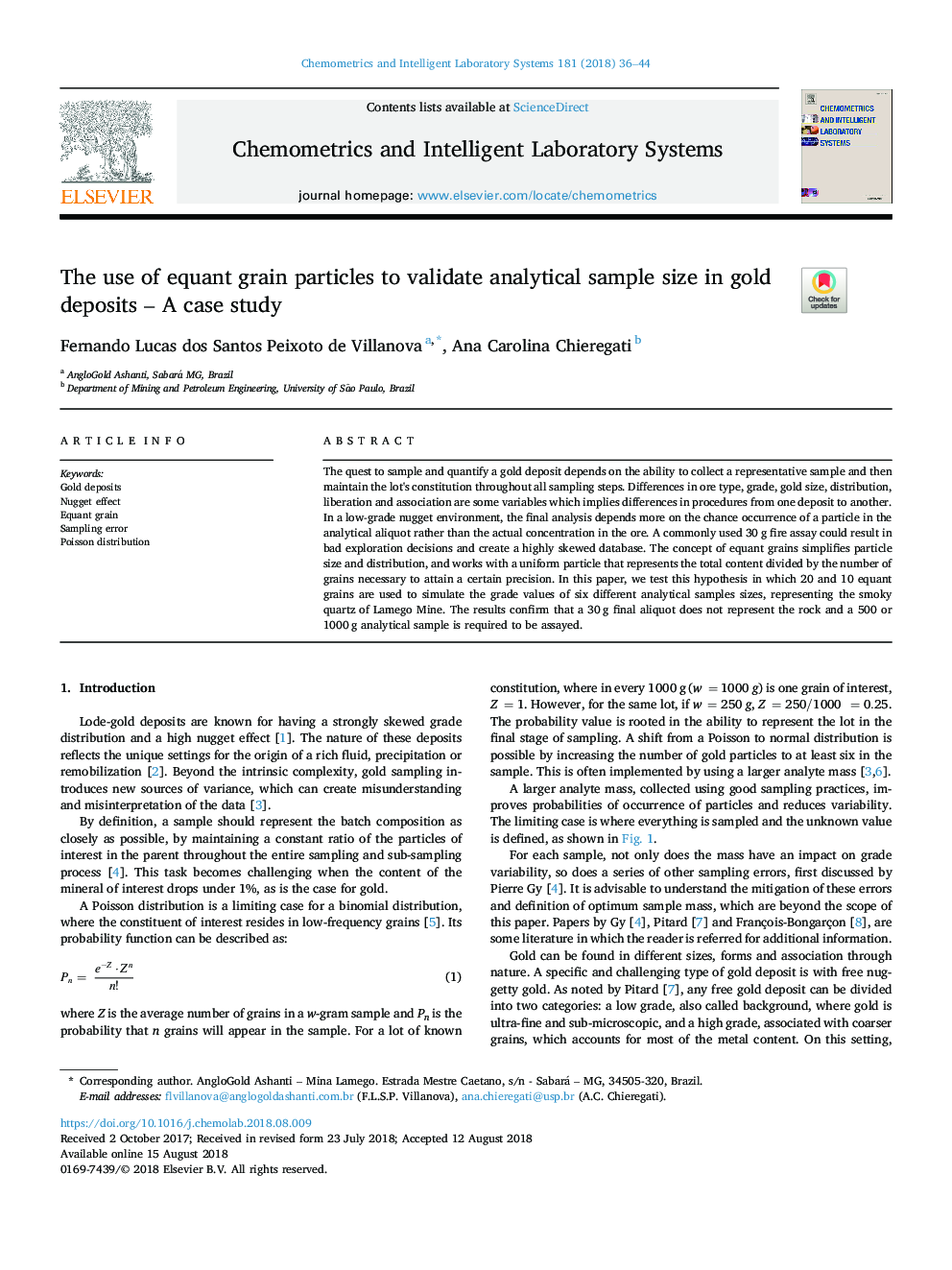| Article ID | Journal | Published Year | Pages | File Type |
|---|---|---|---|---|
| 9953317 | Chemometrics and Intelligent Laboratory Systems | 2018 | 9 Pages |
Abstract
The quest to sample and quantify a gold deposit depends on the ability to collect a representative sample and then maintain the lot's constitution throughout all sampling steps. Differences in ore type, grade, gold size, distribution, liberation and association are some variables which implies differences in procedures from one deposit to another. In a low-grade nugget environment, the final analysis depends more on the chance occurrence of a particle in the analytical aliquot rather than the actual concentration in the ore. A commonly used 30â¯g fire assay could result in bad exploration decisions and create a highly skewed database. The concept of equant grains simplifies particle size and distribution, and works with a uniform particle that represents the total content divided by the number of grains necessary to attain a certain precision. In this paper, we test this hypothesis in which 20 and 10 equant grains are used to simulate the grade values of six different analytical samples sizes, representing the smoky quartz of Lamego Mine. The results confirm that a 30â¯g final aliquot does not represent the rock and a 500 or 1000â¯g analytical sample is required to be assayed.
Related Topics
Physical Sciences and Engineering
Chemistry
Analytical Chemistry
Authors
Fernando Lucas dos Santos Peixoto de Villanova, Ana Carolina Chieregati,
